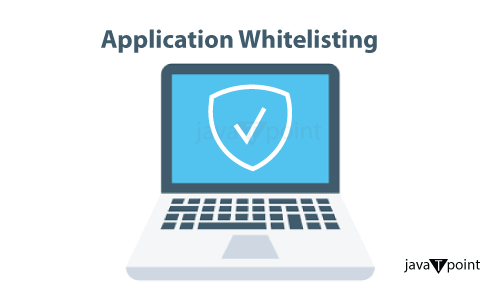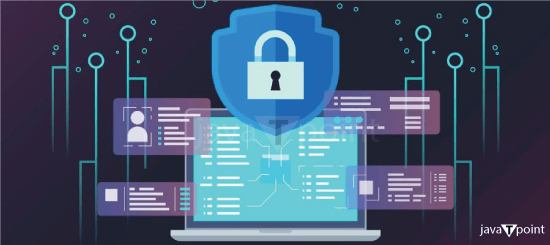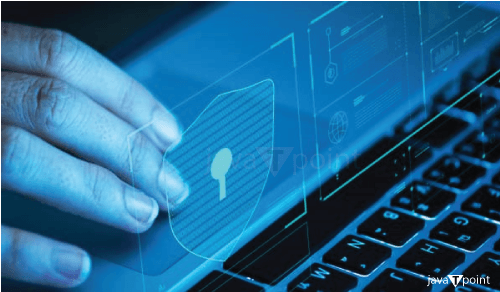Application WhitelistingIntroductionApplication Whitelisting is the process of designating an executable file or software program index that is permitted to exist and be active on a computer system. Whitelisting is used to shield networks and PCs from potentially dangerous software. 
A whitelist is essentially a list of authorized entities. Whitelisting is most effective in information security (infosec) in centrally managed environments when systems are consistently under pressure. Application whitelisting is recommended by the National Institute of Standards and Technology (NIST) in high-risk situations where program use without limitations is less crucial than system security. A whitelist may also index software libraries, plugins, extensions, and configuration files, as well as other authorized application components, to offer further flexibility. What is a Whitelist?A whitelist, sometimes called a pass list or allowlist, is essentially an index of approved entities; in other words, it's a list of applications and the parts of those apps that are permitted to be loaded on a host by strictly adhering to a predetermined baseline, as defined by NIST. In the area of information security, systems operate regularly in centrally managed environments; here is where effective whitelisting may work its magic. A whitelist may also index different parts of the applications that have been authorized. Software libraries, configuration files, plugins, and extensions are a few examples in this scenario. Applications used for application whitelisting can be found under a variety of names, such as application control programs, application whitelisting technologies, or just whitelisting programs, according to NIST's Guide to Application Whitelisting. Application Whitelisting vs BlacklistingApplications that employ application blacklisting, which stops undesired programs from running, are less restrictive than whitelisting, which only permits the execution of programs that have been specifically approved. Security experts cannot agree on whether whitelisting or blacklisting is a superior strategy. Blacklist proponents contend that managing application whitelisting is too complicated. For example, comprehensive information regarding every user's task and every program they require to do those tasks is needed to compile the first whitelist. The growing complexity and interconnectivity of business processes and apps make maintaining the list even more difficult. Whitelisting proponents contend that the time and effort required to proactively safeguard systems and stop unwanted or dangerous programs from joining the network are worthwhile. An application whitelist, which only permits applications that have been expressly approved, provides greater security against malicious software than application blacklists, which have a looser standard and allow any software to run until it has been found to be malicious and added to the blacklist. Implementation of Application WhitelistingDepending on the whitelisting technology being utilized, there are significant differences in the application whitelisting implementation procedure. Still, while putting best practices into practice, there are a few that need to be followed. Prior to initiating the implementation of application whitelisting software, an organization needs to create a thorough inventory of all the applications utilized inside the organization. Remember that the organization's whitelisting policy must apply to every one of these applications. Because the purpose of application whitelisting software is to enforce endpoint security, any software that isn't specifically mentioned in the policy that the company establishes won't be permitted to run. It is crucial to compile a thorough inventory of all the applications that the company employs because of this. An application will become inaccessible to users if it is not recognized and added to the whitelisting policy. 
Another best practice is to be cautious about how whitelisted applications are defined. Certain files or folder names may be added to an organization's whitelist. However, employing this approach can leave the company open to threats and ransomware attacks. Application whitelisting software can be tricked by malicious code that uses the same file names or folders as genuine apps, which is why it's problematic to identify applications by the files or folders they use. Identifying applications using a cryptographic file hash or the publisher's signature is the best approach for ensuring strong endpoint security. With the majority of application whitelisting solutions, you can build your whitelisting policy around one or both of these identifiers. Types of Application WhitelistingThere are several approaches to accomplish application whitelisting. The National Institute of Standards and Technology (NIST) states that the following five primary categories rely on:
File Size WhitelistingThe file size is a straightforward characteristic that you can utilize in your company's systems for application whitelisting. A file's size will alter as soon as malicious code is injected into it by a cyberattacker on any device. This will raise an immediate red flag and prevent the software from operating, protecting your company from digital damage in the process. Unfortunately, there are a lot of disadvantages to this. The fact that it requires accounting for individual files based on a variable criterion makes it particularly difficult to track. Furthermore, a file's size can be altered without malicious interference. For example, if an employee modifies a critical document and adds new text and media to it, its size will increase from (say) 1MB to 5 MB. It is not ideal to whitelist applications based on file size. File path whitelistingWhen you whitelist apps by file path, your system permits network execution of any application that is located on a specified path. You can use both full file path whitelisting and directory-based whitelisting, or you can use both to do it. Whereas comprehensive file path whitelisting only addresses individual files, directory-based whitelisting authorizes entire folders. For example, all of the subfolders in C:/Windows/Program Files will be permitted to execute if you decide to whitelist that pathway. However, only that particular file in the Microsoft Office subfolder will be permitted to execute out of the entire folder if you decide to whitelist C:/Windows/Program Files/Microsoft Office/filename.xml. Using both versions simultaneously, preferably with a stronger emphasis on whole file path whitelisting, will improve security. File Name WhitelistingYou can also approve apps by file name instead of by file path when whitelisting applications. This option carries a higher risk but is easier to acquire and understand than the prior one. By renaming compromised files to appear like titles on your system's whitelist, malicious actors can readily enter your network. Consider the previously provided filename.xml as an example. The identical file path can be mirrored in C:\Windows\Program Files\Microsoft Office, although this takes a bit more effort for hackers to accomplish. It is far simpler and easier for them to just infect your infrastructure with a macro executable that was renamed to filename.xml. For this reason, we advise against using file name whitelisting alone and always take into account the extra layer of MD5 hash whitelisting. Hash WhitelistingA file is assigned a unique alphanumeric value using an MD5 hash. Application whitelisting processes that adhere to this standard thereby permit the execution of only hashed files, independent of their location or name. Although this kind of whitelisting is the safest, it presents new difficulties for your network admin. When files are updated, hashes are modified. Whitelisting requirements must, therefore, be updated as necessary when this occurs. Moreover, the whitelist needs to have all out-of-date hashes for software versions that have known vulnerabilities removed. Therefore, while this kind of application whitelisting has security benefits, it can also be difficult to maintain. Digital Signature/Publisher WhitelistingApplication whitelisting based on publisher identity is based on the assumption that programs from reputable developers are trustworthy and may thus be safely permitted for use on your corporate network. In this instance, updating the whitelist is only necessary in the event that new software is made available or a publication modifies its signature key. Compared to other whitelisting options, the process team will have a simpler time handling this task. However, the biggest drawback of letting programs run as directed by their publisher is that this also applies to software that is vulnerable and has become obsolete. Why is Application Whitelisting Important?Application whitelisting is crucial because it gives your IT administrators more control over which apps are installed on a host and can protect your company from ransomware and zero-day threats. The use of application whitelisting has several advantages. System administrators may easily oversee this process, which offers a strong defense against malware infections and other malicious software when configured properly. Application whitelisting has a lot of advantages, but I'll highlight a few here: 1. It keeps ransomware, zero-days, and other malware types awayTo ensure that no dangerous code is executed within your company, you take precautions against cyberattacks that use various malware types, ransomware attacks, keyloggers, APTs, fileless attacks, and zero-day vulnerabilities. Typical antivirus software is created using signatures, which function in a similar way to blacklisting. In other words, if a file wants to execute on a computer, the antivirus program will use its hash to compare it to a database that already exists and contains instances of malicious code. It permits them to launch if they cannot locate it on that list. And for that reason, application whitelisting is significantly more effective than a simple antivirus program because no file that hasn't been pre-approved and whitelisted can be launched. And, because the malware gamut is constantly extending with new varieties and forms, no antivirus will be able to keep up, causing its malicious code database to become erroneous. Take a look at the statistics: every day, 350,000 new strains of malware are discovered. 2. It supports software license complianceSoftware license compliance and audit requirements continue to align. This procedure will greatly lower the chance of software being installed without a license in a corporation because only whitelisted apps are permitted to launch. This implies that you won't have any software license violations when audit time comes around. 3. It gives admins control over executed applicationsIt gives the user control over which application runs on a network where it is important to protect sensitive data. The administrators make the decisions about the whitelisting of applications. In order to make the system safer, they will choose which applications are added to the whitelist and permitted to be run on an endpoint. Any end-user who was allowed to participate in the decision-making process may have unintentionally allowed any program to run, whether dangerous or not, which might have resulted in security breaches. 4. System speed is enhanced, and system interruption is decreasedIt lowers system interruptions and speeds up the system. Thus, keeping track of approved applications would improve resource management among networks, which would naturally lead to improved cybersecurity measures. 5. Less IT assistance neededUsers won't require IT support all the time. Users will have less chance of installing any software that could conflict with other installed programs and cause system faults that require IT support because they will only be permitted to install whitelisted programs. This implies that a business will spend less money on its service desk. 6. It provides you with reporting capabilitiesApplication whitelisting tools can help you stay up to date with the most recent versions of programs by providing reports on data usage and new installations of applications on a host. Benefits of application whitelistingOrganizations that are worried about security might profit greatly from application whitelisting. Application whitelisting also has advantages in terms of efficiency and legal compliance. 
Limitations of application whitelistingEven though there are many advantages, implementing good application whitelisting can be very difficult. Let's examine certain restrictions to take into account while determining if whitelisting is beneficial for your company. 1. Higher maintenanceMaintaining an updated whitelist can be difficult, necessitating ongoing assessment and prompt action from administrators. To guarantee that an organization's IT system is kept as secure as possible, ongoing maintenance is required. Tools that are thought to be secure one day may be vulnerable to breaches the next since attackers are constantly looking for new weaknesses. As a result, blacklists can be more effective since they provide a greater variety of choices in some circumstances. However, efficiency and security requirements are trade-offs. This needs to be carefully measured depending on a number of variables, including your tolerance for risk, the impact on your production, and any legal requirements. 2. Difficulties when establishing an initial indexImplementing application whitelisting requires careful consideration of a number of variables. If a program doesn't meet security criteria, a company that has been using it without a whitelist will likely have to stop using some of its present applications. It can take some time and work to replace them. In addition, extensive staff training might be necessary for replacement tools. Although time spent on training is beneficial in the long run, it can have an immediate impact on the momentum of ongoing tasks. Productivity and security are typically inversely proportional. While increased security helps lessen breaches, it also presents a number of difficulties for staff members that may affect their output. When finishing work, following security standards frequently necessitates taking extra, sometimes unexpected, measures. 3. Reduced productivityProductivity and security are typically inversely proportional. While increased security helps lessen breaches, it also presents a number of difficulties for staff members that may affect their output. When finishing work, following security standards frequently necessitates taking extra, sometimes unexpected, measures. This can make employees feel more frustrated overall. Reducing the number of applications available for use within your company will unavoidably reduce the range of candidates who possess the necessary skill set to meet a position's criteria. The hiring manager's work may become more challenging as a result. Application Whitelisting Best PracticesThere are three key components to implementing application whitelisting in your enterprise infrastructure: creating a baseline, whitelisting trusted applications, and keeping an eye on the necessary updates. We'll go into greater detail about each step in the subsections that follow, along with some additional application whitelisting best practices that you should start using right away. 1. Audit Your Corporate NetworkThe assessment of your corporate network is the initial step towards successful application whitelisting. Scan your system and any external discs, assuming everything is clean, to find out which programs and processes are essential to the operation of your business. This will assist you in determining the minimum number of programs that require your approval. By doing this, you will also remove any unnecessary or maybe harmful programs that are utilizing the network. For example, you can utilize patch and asset management tool in this situation. How come? Because it gives you a comprehensive asset inventory report of all the installed software in your company in a couple of seconds. 2. Whitelist Trusted ApplicationsIt's time to whitelist those apps after you've determined which ones you can trust. This practically means that you control what applications can run on your business network and can block anything else. As soon as possible, you should take this action to further lower hazards. This is also the time to decide on the kind of application whitelisting you wish to implement. You have the option to select from among the following: publisher, cryptographic hash, file size, file name, and file location. To cover all your bases, implement a well-balanced blend of multiple criteria. You may get assistance with that and more with our Heimdal Security Application Control software. Manage system access via publisher, certificate, MD5 hash, software name, file path, or publisher to have total control over your access governance plan. Application control is a complicated cybersecurity solution that goes beyond whitelisting. 3. Constantly Update the WhitelistRemember to update your whitelist after you've made it and have the tools to make it stronger. As I've covered in this post, vulnerabilities found in previous iterations of an application often lead to the release of new versions. After automatic software patching, the best cybersecurity practice in this circumstance is to update the system whitelist. 4. Whitelist both on-premises and cloud applicationsFor every business, both cloud and on-premises apps are crucial. To improve organization security, administrators should identify which critical business apps fall into which category and whitelist them. 5. Check the publisherA recommended procedure for whitelisting applications is to confirm the software's publisher each time before putting it on your system. By doing so, you can make sure that your computer is free of viruses. 6. Whitelist specific admin toolsSome administration tools should also be whitelisted. The user can use these particular admin tools without causing the restriction to take effect by whitelisting them. Restricting who has access to certain tools can be aided by a selective access protocol. 7. Use application whitelisting along with other cybersecurity measuresApplication whitelisting is not the only strategy you should use to ensure the security of your organization. It only supplements existing network security technologies like antivirus software, email encryption, patch management, DNS filtering, and so on. For example, application whitelisting can be used in conjunction with an automated patch management tool. This allows patches to be approved prior to deployment within your company, as whitelisting technologies typically prevent the execution of new software versions. By allowing administrators to approve a patch before it is deployed and added to the whitelist, a patch management solution will enable this.
Next TopicLine of Control (LOC)
|
 For Videos Join Our Youtube Channel: Join Now
For Videos Join Our Youtube Channel: Join Now
Feedback
- Send your Feedback to [email protected]
Help Others, Please Share










